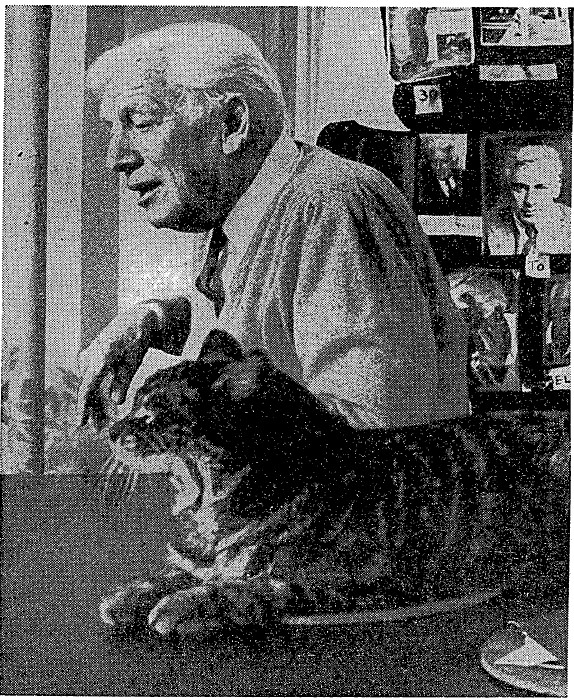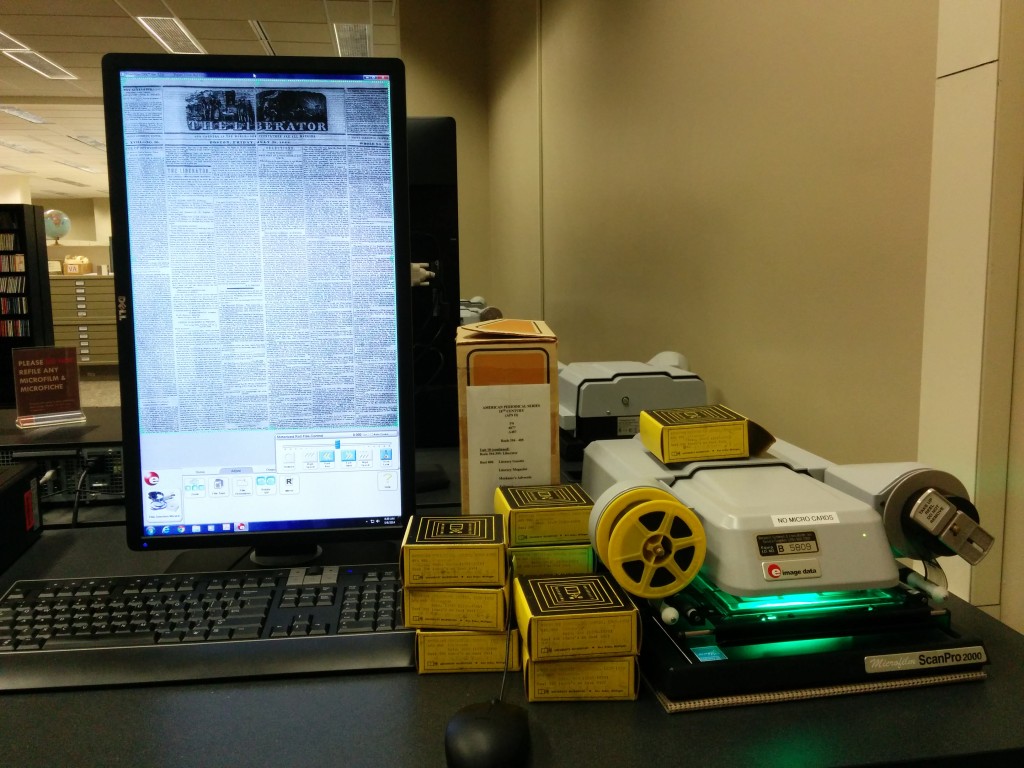“Peaceable Secession an Absurdity” (New York Evening Post, November 12, 1860) posted by Rad Geek 21 Jan 2017 12:33 pm
Howard Cecil Perkins, ed. Northern Editorials on Secession, Volume I (Gloucester, Mass.: Peter Smith, 1964), 158-162.52. Peaceable Secession an Absurdity
(New York Evening Post [Lincoln], November 12, 1860)
In behalf of the treachery and imbecility of the Administration at Washington the new doctrine is invoked that each state has a right peacefully to secede–that nullification of any particular law of Congress is to be resisted and punished by the government, but that secession, i.e., the absolute nullification and defiance of all such laws, and of the Constitution and of the Union, is perfectly right and within the power, at all times, of each and every state. The faithless members of the cabinet seek thus to shelter themselves and their partisans in disunion from resistance by the general government, while the imbeciles aim in the same way to find an excuse from [sic] shrinking from their duty of affirmative and energetic action for which they lack courage if not principle.
A more monstrous and absurd doctrine than that of the right of any state at its pleasure to secede from the Union has never been put forth. the government in such case would indeed be a mere rope of sand. According to this dogma, Cuba, after we shall have paid $200,000,000 for her purchase, as a state may at once secede, and leave the United States Treasury to place that small item to the account of “profit and loss.” Texas, when she came into the Union after we had paid many millions to discharge her debts, and other millions to go into her coffers, was and is entirely at liberty to secede with the booty. Each and all the states carved out of the Louisiana purchase, for which we also paid such an immense sum, may do the like.
So, too, states in which the largest amounts of the public property may be situated may at any time secede with that property. When the Pacific Railroad shall be constructed, at an expense of countless millions, paid from the common treasure, the two or three states through which it will run may decamp with the plunder and plant a custom-house on the site of our storehouses. Vermont, New Hampshire, Indiana, Illinois, Ohio, Kentucky, Tennessee, and the other inland states, which will have contributed to these great disbursements, and in which states hardly a dollar of the public treasure is even [ever?] expended, are to look quietly and approvingly on the exodus of those which have been thus purchased and enriched at their expense, and to recognize the right of each of them to secede and take the property with them.
Again, if this right exists it exists at all times, until no two states remain united. What, then, would become of the national debt and the national credit? To whom would the creditors of the government look for payment? Should the government be, as it may at any time be, indebted on its stocks hundreds of millions of dollars, its creditors could look, in case of secession, only to the states which should remain united. Those which should have seceded and established independent governments could not be reached. The creditor could claim of them no percentage of liability. They would plead that they had never contracted, and that they had been only stockholders in a corporation in which there was no individual liability.
Nor could the continuing government of the United States compel the payment by the seceding state of a portion of the public debt. There would be no data from which a definite percentage could be assigned to it, nor would it have the ability to pay. If South Carolina finds it [161] necessary to repudiate at the outset by suspending specie payments, and (as already foreshadowed) by annulling even private debts due by its citizens to those of other states, it is plain that both ability and principle will be lacking for payment of her share (if it could be allotted) of the public debt. There is no court by which any fixed amount could be established as due from her on account of that debt, or which could issue execution for its payment. It results therefore that the seceding state could only be compelled to pay any share of the national debt (contracted on her account, as well as that of the other states) by war and reprisals by the general government. This puts an end to the idea of peaceable secession and the right of secession.
But can any of the democratic book-keepers tell us how (if payment could be compelled) they could make out the account current between the seceding state and the government, so as to strike a balance between the debit and the credit sides? Large amounts have been expended by the government on her account and within her borders. Forts for her harbors, light-houses, court-houses, coast-surveys, custom-houses, nonpaying postoffices and post routes, and salaries of the swarms of officers and leeches attendent upon all these, in addition to her undefinable share of the public debt, have all been paid. But then she has a credit side of the account also, which it will be impossible to adjust. How are we to ascertain the values and the proportions thereof to which she is entitled of the public arms and ammunitions of war, arsenals, ceded places, public edifices, ships of war, and of the public lands? Is there any court, or is there any form of action by which partition can be made of the territories? This last item is a very material one, for the only point of principle on which the secessionists take issue with the Republicans as to the platform of the latter (adopted at Chicago) is that of carrying slavery into the territories. What foothold or property in the territories will the seceders retain on leaving the Union? They will be foreign states, and we believe it has not yet been claimed, even by Judge Taney, that the laws of foreign states extend proprio vigore over the territories.
Another difficulty in making up the account with South Carolina would result from her claiming an almost incalculable credit for the disproportion of the public burdens which she fancies she has borne in the confederacy, by reason of what she considered the unequal operation of the various revenue laws.
Now, this right of secession, if it exist at all, is an absolute one, and a state has as much right to exercise it at one time as at another. If she may secede at will, she may do so in anticipation of war, or in time of [162] war. If she can secede when she chooses, she owes no allegiance to the government an hour after she decides to secede, but will then be just as independent of the government as she is of any other nation. In the midst of war, then, it will be the right of any state not only to desert our own government, but at the same time to ally herself with the enemy. The Hartford Convention complained that New England was heavily taxed, but not defended by the general government, and merely proposed to ask the consent of the government to expend in the defence of New England the taxes raised in New England. This was not claimed as a right, but the consent of the government was to be sought. This was hardly an approach to secession, but the democracy of that day did not tolerate even the proposition, and the Hartford Convention was execrated.
But the absurdity of this new doctrine of the right of secession is too palpable for serious argument. The government under such a principle could not have twenty-four hours of assured existence. Neither other nations, nor its own citizens, could have confidence in its permanence. It would lack the vital principle of existence, because it would wholly lack credit. Nobody would lend it a dollar, for nobody could be sure that it would hold together long enough to pay a six months’ loan, to say nothing of loans for long terms of years. The public faith, on which alone all who deal with governments can repose, would be utterly lacking. Business could have no security or stability, for men would not embark either their industry or their capital, unless under the shelter of laws and institutions not liable to change.
No–if a state secedes it is revolution, and the seceders are traitors. Those who are charged with the executive branch of the government are recreant to their oaths if they fail to use all lawful means to put down such rebellion. The people of no party base any confidence either in the fidelity or nerve of the Administration in Washington, but fear they will prove, some of them from inclination and others from timidity, practical allies of the revolutionists. They and their partisans have done all in their power to inflame and mislead the South, by charging upon the northern states the design of interfering with the rights of the people of the South, and the mercenaries here have co-operated in this false clamor and deception. The Administration, in relinquishing the government will endeavor to leave all possible embarrassments in the way of its successors, but we much mistake if those of its partisans here who have been foremost in the false work, will not be the first with whom the consequent mischief will come home to roost.




